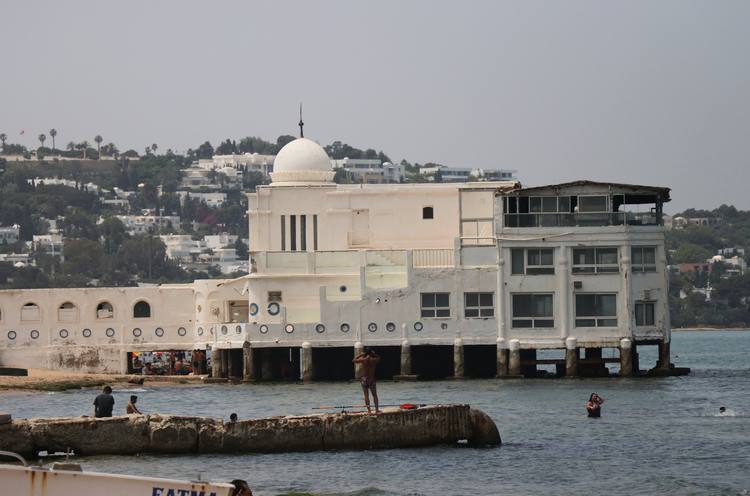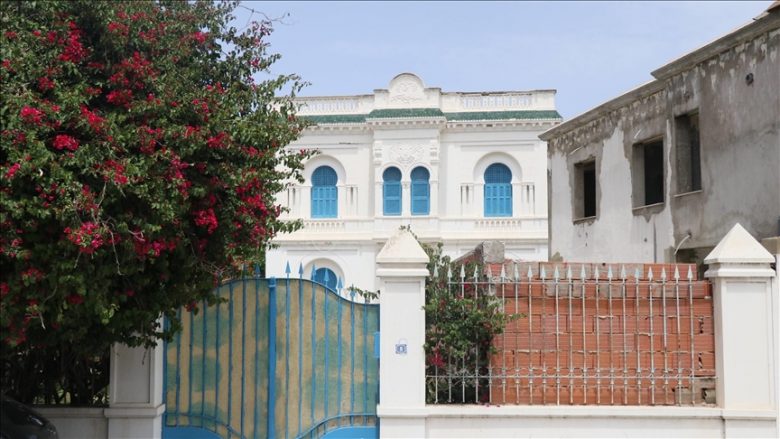There are many buildings and Bey Palaces built in Bardo, Mennuba, Marsa and Carthage regions, including the capital Tunis, during the reign of 19 Ottoman Beys between 1705-1957 in Tunisia.
The Bey Palaces of Tunisia
The magnificent “Bey Palaces” of Tunisia from the Ottoman period shed light on the country’s political history as well as its artistic and architectural past.
There are many buildings and Bey Palaces built in Bardo, Mennuba, Marsa and Carthage regions, including the capital Tunis, during the reign of 19 Ottoman Beys between 1705-1957 in Tunisia.
Marsa, located in the northeast of the capital Tunis, which hosts most of the palaces in Tunisia, stands out among other Tunisian municipalities with its long beaches and detached houses.
Many important gentlemen’s palaces in the capital Tunis continue to serve in Marsa. Sidi Busaid, which stands out with its blue and white buildings, which are among the important symbols of the country, is also located in this district.
Today, the Saadet Palace (Kasr es-Saade), which is used as the Marsa Municipality Palace and preferred by many couples for weddings, is among the leading palaces built in the last period of the Ottoman Beys of Tunisia.
Kubbet el-Heva Palace (Havadar Dome), which is among the symbols of Marsa, is also considered to be one of the summer palaces from the Ottoman period. The palace, which was built for the Bey family to swim secluded in the summer months, has been abandoned due to legal disputes despite its unique architecture built on the sea.
Nasır Bey’s gift to his wife: Saadet Palace
The Saadet Palace, which was built to be used as a residence by Muhammed Pasha, who ruled in Tunisia between 1855-1859, is considered among the palaces that have survived and are considered relatively new since it was restored between 1914-1915.
The Saadet Palace, which hosted the first President of Tunisia, Habib Bourguiba, for a while, was later used as a guesthouse for foreign government officials. It was handed over to the municipality to be used as Marsa City Hall during the reign of Tunisia’s last President, Zeynel Abidin Ben Ali, before the 2011 revolution.
Muhammed Ali Bey, the Vice President of the History and Reconciliation Association, who is a descendant of the Ottoman Beys, said in a statement to the AA correspondent, “The Saadet Palace, which was restored in 1914, was given to his wife Kamer by Seyyid Nasır Bey as a gift. After Bourguiba became President of Tunisia, he chose to reside in the Palace of Felicity, although there were more lofty and spacious palaces.” he said.



Drawing attention to the importance of the palaces built during the Ottoman period in terms of learning the history of Tunisia, Ali Bey said, “The Saadet Palace, located behind the surviving palaces of the Ottoman Beys, is an important opportunity for Tunisian youth to discover the history of the country. The architectural works of Tunisia from the Ottoman period are among the historical works that will help us to know and understand the Beyler period.” said.
Kubbet el-Heva Palace, the palace of the Bey’s wives above the sea
Kubbet el-Heva Palace, which was built by Ali Bey in 1930 on the sea on the coast of Marsa, was built in such a way that the Bey’s harem could easily enter the sea.
After Tunisia gained independence from France in 1956, the Kubbet el-Heva Palace was also given to the Municipality of Marsa. The palace, which was sold to a private person in 1960, is in a derelict state due to the problems related to its legal status following the 2011 Tunisian Revolution, after many changes of owners.
Providing information about the Kubbet el-Heva Palace, Ali Bey said, “The Kubbet el-Heva Palace, which was used as a restaurant and a wedding palace for a period, has undergone many changes by its owners. Despite all the changes, the palace still stands and preserves its place among the symbolic buildings of Marsa.” said.
Kubbet el-Heva Palace, which many Tunisian NGOs have called on the authorities to preserve its unique architectural structure, is waiting for its legal status to be clarified so that it can be maintained.
Dozens of Bey Palaces were built in the capital Tunis
Among the dozens of palaces built during the 250-year rule of the Ottoman beys, the Dar et-Taç Palace (Crown House Palace), which was destroyed in 1956, has a special place. Located within the borders of Marsa Municipality and the most magnificent of the palaces built on the shore, the Crown Palace was also the administrative center of the Beys. The Crown Palace, which is stated to have been built by Mahmut Bey in the first quarter of the 19th century in official records, was demolished after Tunisia gained independence from the French in 1956.
The Great Bardo Palace, located in the Mennuba region of Tunisia, has been used as the Government Palace for many years, and now serves as a museum next to the Tunisian Parliament.
The Rose Palace, which was also built in 1798 in the Bardo district, was handed over to the Tunisian Army in 1986 to be used as a Military Museum.
The Copper Domed Palace, built by Muhammed Reşid Bey in 1758, is also located in Mennuba. The palace, whose dome was made of copper by Tunisian coppersmiths, has a large swimming pool.
Zarruk Palace, the last palace where the beys resided, is located in the historic city of Carthage, which belongs to the Tunisian metropolitan municipality. Today, the palace, known as the House of Wisdom, houses the Academy of Science, Arts and Letters, the National Archeology Institute and the National Translation Institute.
